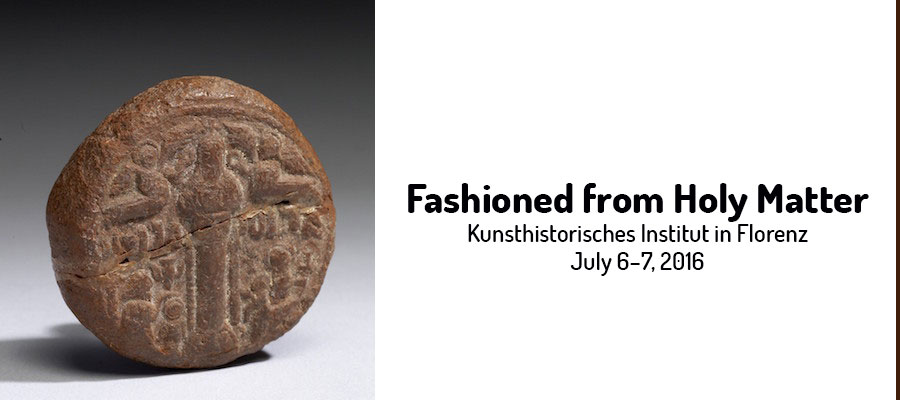Fashioned from Holy Matter. A cross-cultural workshop on the semantics of image-making, Kunsthistorisches Institut in Florenz, July 6–7, 2016
This workshop draws attention to a particular type of image, which has not been studied yet as a group: images that were made of or shaped from holy matter, such as earth, stone, blood, sweat or wood. These materials might have been used as a support for painting, colour itself, as a modelling substance or as building material. The image-relic relationship—in particular, the insertion of relics into images/icons or reliquaries—and the miraculous properties of images in general have been the subject of sustained scholarly interest. In addition, the material properties of images and materiality, more broadly, are now major areas of study in both art history and a number of related disciplines. Yet little work has been devoted to the creative use of matter already perceived as holy or, vice versa, the later attribution of holiness to the substance of images.
The workshop seeks to explore from a cross-cultural and interreligious perspective how holy material becomes semantically charged and/or redefined through the process of artistic creation. How is meaning attained through the interaction between holy substance and image and how is the value of the holy matter communicated to various audiences (through inscriptions or legends for instance)? Does the image authenticate its holiness and, if so, what visual strategies were used? How might written descriptions or representations of images also make this holy presence known? A related objective of the workshop will be to analyse the implications of meaning: how does it contribute to the function, use and activation of such images—in both sanctioned and unofficial devotional and ritual practices—, which might be informed by possible transcultural and transhistorical dynamics. Further, how might the meanings ascribed to fashioned matter express apotropaic, pharmacological or other concerns?
Papers from all fields, from earliest to contemporary times, are welcome.
